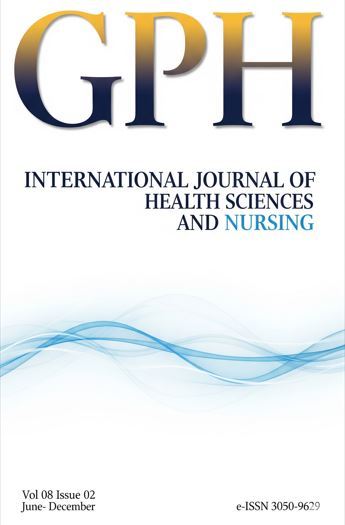Influence of Craterispermum schweinfurthi leaf extract on glucose homeostasis in male Wistar rats
Abstract
The present study aims to determine the potential influence of Craterispermum schweinfurthi leaf extract on glucose homeostasis using male Wistar rats as models. 48male Wistar rats were acclimatized and subsequently randomly divided into 6 groups of 8 rats each. Diabetes was induced in all rat groups except Group 1 using alloxan at a dose of 200mg/kg bw administered intraperitonially. Diabetes was confirmed after 72 hours of alloxan administration if the blood glucose level is ≥ 11.1 mmol/L (200mg/dl) and was daily treated with different concentrations of extract.Compared to group 2 (Untreated Diabetic) rats, administration of graded doses ofthe extract of Craterispermum schweinfurthi amongstGroups 3, 4 and 5 rats demonstrated a dose dependent significant reduction (p<0.05)in blood glucose level and glycosylated hemoglobin concentrationwith the highest dose demonstrating the most impactful outcome. Suggesting a possible hypoglycemic and anti-hyperglycemic effects of the extract. Similar results were observed amongst group 6rats followingadministration of Glibenclamide. Treatment of diabetic rats with hydromethanol leaf extract of Craterispermum schweinfurthi lowered blood glucose level and ameliorated glycosylated hemoglobin concentration in male Wistar rats.
Downloads
References
2. Olausson EA, Alpsten M, Larsson A, Mattsson H, Andersson H, Attvall S. (2008). Small particle size of a solid meal increases gastric emptying and late postprandial glycemic response in diabetic subject with gastroparesis. Diabetes Research and ClinicalPractice.8:231–237. 10.1016/j.diabres.2007.12.006.
3. Godfrey R, Julien M.(2005). Urbanization and health. Clinical Medicine (Lond).5(2):137-141.
4. Saronee F, Amah-Tariah FS, Chinko BC and Dapper DV. (2023). GC-MS and proximate analysis of the hydromethanol extract of Craterispermum schweinfurthi leaves. South Asian Res. J. Nat. Prod. 6(2):101-109. Saronee622023SARJNP99246%20(1).
5. Saronee F, Dan-Jumbo D,Azosibe P, Amadi JE. (2024). Modulatory Functions of Craterispermum schweinfurthi on the Hypothalamic-Pituitary Gonadal Axis of Male Wistar Rats in Phenyl Hydrazine Induced Testicular Toxicity. Journal ofComplementary and Alternative Medical Research. 25(4): 31-39. 10.9734/JOCAMR/2024/v25i4530
6. Iwu M. (1993). Handbook of African Medicinal Plants. CRC Press Boca Raton, FL. 32-38.
7. Taedoumg HBP, Hamon P, Sonké B. (2012). Craterispermum parvifolium and C. robbrechtianum spp. nov. (Rubiaceae) from west central Africa. Nordic Journal of Botany. 29(9):700–707.
8. Taedoumg HBP. (2013). Craterispermum capitatum and C. gabonicum (Rubiaceae): two new species from the Lower Guinean and Congolian Domains. Journal of Plant Taxonomy and Geology.57(3):236-242.
9. Sofowora A. (1993). Screening plants for bioactive agents. In medicinal plants and traditional medicine in Africa. Spectrum books limited Ibadan, 2ed, 134-156.
10. Saronee F, Amah-Tariah FS, Chinko BC, Dapper DV. (2023). Ameliorative effects of the hydromethanol leaf extract of Craterispermum schweinfurthii on phenyl hydrazine induced anemia in male Wistar rats. International Journal of Recent Research in Life Sciences 10(3): 19-25. https://doi.org/10.5281/zenodo.8176890.
11. Saronee F, Amadi J,Azosibe P. (2024). Effects of the Hydromethanol Leaf Extract of Craterispermum schweinfurthi on Sperm Characteristics and Hematological Indices in Male Wistar Rats. Cross Current International Journal of Medicine and Bioscience. 6(1), 21-25. 10.36344/ccijmb. 2024.v06i01.005.
12. Saronee F, Dan-jumbo D,Azosibe P. (2024). Aphrodisiac properties of Craterispemum schweinfurthi Leaf Extract in Lead Induced Testicular Toxicity in Male Wistar Rats. Journal of Applied Science and Environmental Management. 28(5): 1513-1518. https://dx.doi.org/10.4314/jasem.v28i5.23.
13. Aliu YO, Nwude N. (1982). Veterinary pharmacology and toxicology experiments. Zaria: ABU Press, Zaria
14. (US) NRC. Committee for the Update of the Guide for the Care and Use of Laboratory Animals2019. Available from: https://www.ncbi.nlm.nih.gov/books/NBK54050/ downloaded on the 20th of june, 2022.
15. Stanely Mainzen Prince P, Menon VP. (2001). Antioxidant action of Tinospora cordifolia root extract in alloxan diabetic rats. Phytotheraphy Research.15 (3):213-218.
16. Saronee F,Bekinbo MT,Ojeka SO, Dapper DV. (2019). Comparative assessment of methanolic extracts of hog plum (Spondias mombin Linn.) leaves and turmeric (Curcuma long L.) rhizomes on blood glucose and glycosylated haemoglobin in male Wistar rats. Journal of Applied Science and Environmental Management. 23(9):1631-1636. https://dx.doi.org/10.4314/jasem.v23i9.4
17. Xi L, Qian Z, Xu G, ZhouC. (2007). Sun S. Crocetin attenuates palmitate-induced insulin insensitivity and disordered tumour necrosis factor-alpha and adiponectin expression in rat adipocytes. British Journal of Pharmacology.151 (5):610- 617.
18. Saronee, F, Wiliam A. G, Offong, E. J, Amadi, J. E, Azosibe, P. (2024). Hypolipidemic And Testicular Cytoarchitecture Protective Effects of the Hydromethanol Leaf Extract of Craterispermum schweinfurthi in Male Wistar Rats. EAS Journal of Pharmacy and Pharmacology, 6(4), 157-162. 10.36349/easjpp. 2024.v06i04.002.
19. Okonkwo PO, Okoye ZSC. (2009). Hypoglycaemic effects of the aqueous extract of Newbouldia laevis root in rats. International Journal of Biology and Chemical Science.3 (5): 998-1004.
20. Luka CD, Tijjani H.(2013). Comparative studies of the aqueous extracts of Ocimumgratissimum, aloe vera, and Brassica oleracea and Ipomoea batatas on some biochemical parameters in diabetic rats. IOSR Journal of Pharmacy and Biological Science.6 (3):23-29.
21. Szkudelski T. (2001). The mechanism of alloxan and streptozoticin action in B cells of the rat pancreas. Physiological Research. 56(6):537–546.
22. Kilpatrick ES, Bloomgarden ZT, Zimmet PZ. (2009). Is haemoglobin A1c a step for diagnosing diabetes? British Medical Journal. 3(3)9:4432. 10.1136/bmj.b4432
23. Aba PE, Asuzu IU. (2018). Mechanisms of actions of some bioactive antidiabetic principles from phytochemicals of medicinal plants: a review. Indian Journal of National Production Resource. 9(2):85–96.
24. Anand P, Murali KY, Tandon V, Chandra R, Murthy PS. (2007). Preliminary studies on antihyperglycemic effect of aqueous extract of Brassica nigra (L.) Koch in streptozotocin induced diabetic rats. Indian Journal of Experimental Biology. 45:696–701.
25. Yu J, Zhang Y, Sun S, Shen J, Qiu J, Yin X, Yin H, Jiang S. (2006). Inhibitory effects of astragaloside IV on diabetic peripheral neuropathy in rats. Journal of Physiology and Pharmacology. 8(4):579–587. 10.1139/y06-015.
Author(s) and co-author(s) jointly and severally represent and warrant that the Article is original with the author(s) and does not infringe any copyright or violate any other right of any third parties, and that the Article has not been published elsewhere. Author(s) agree to the terms that the GPH Journal will have the full right to remove the published article on any misconduct found in the published article.




